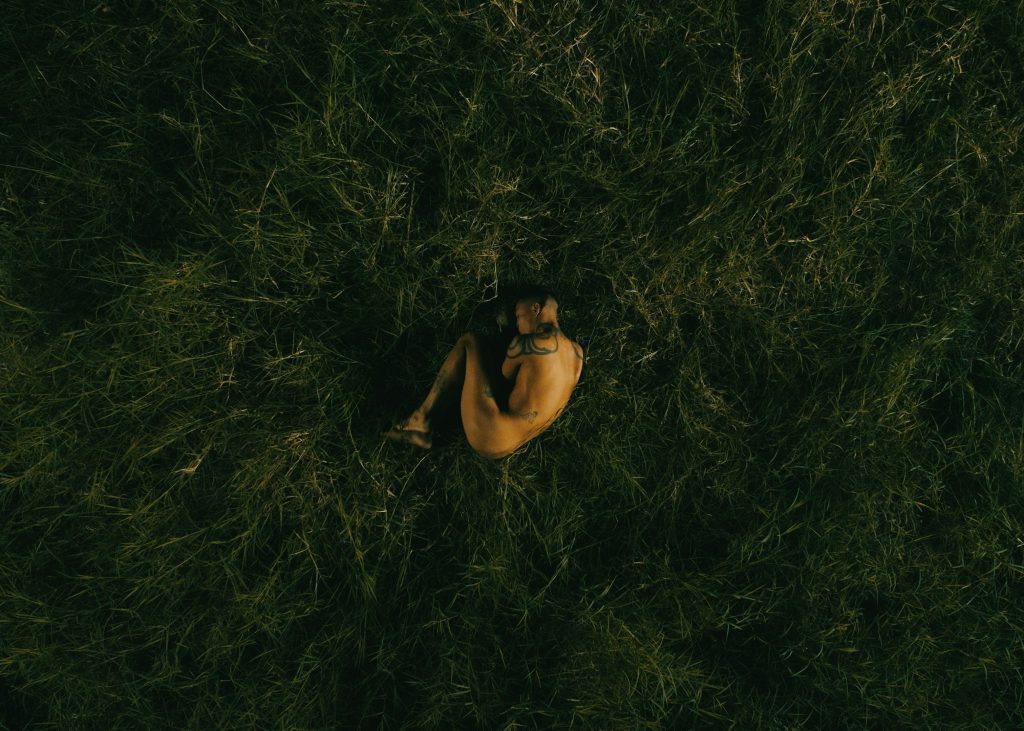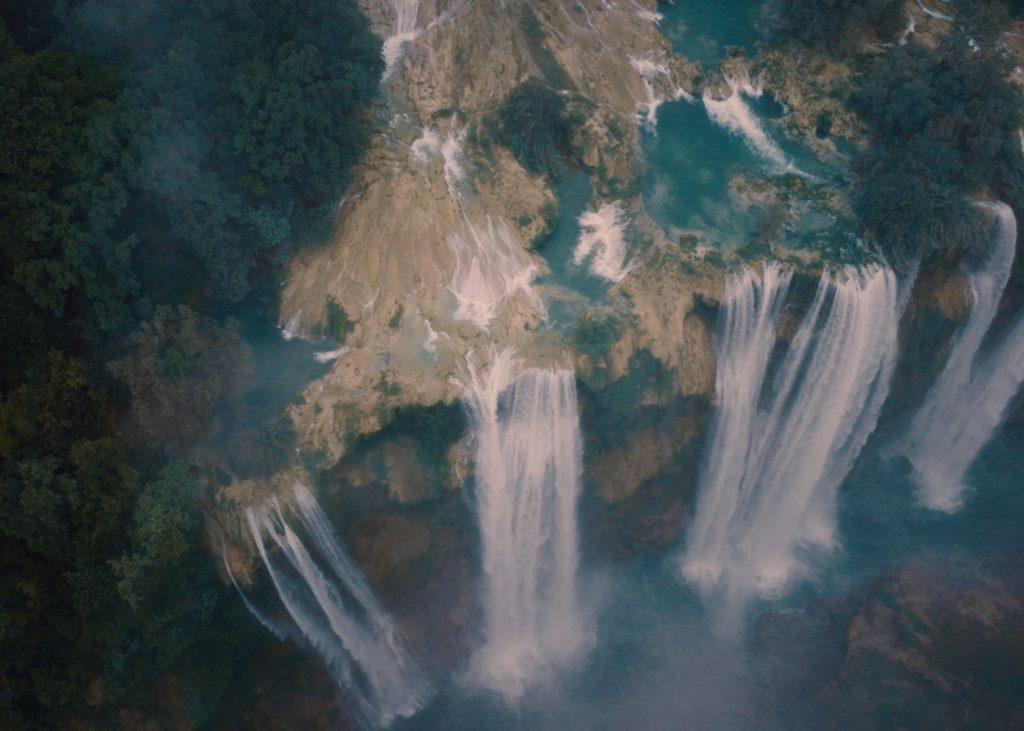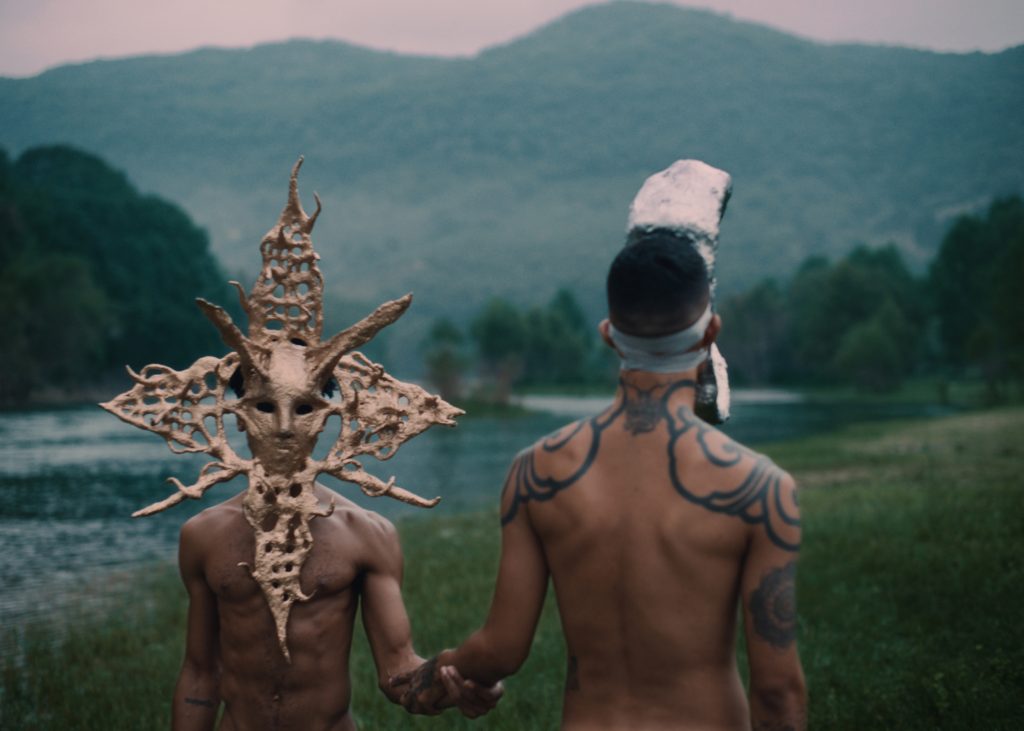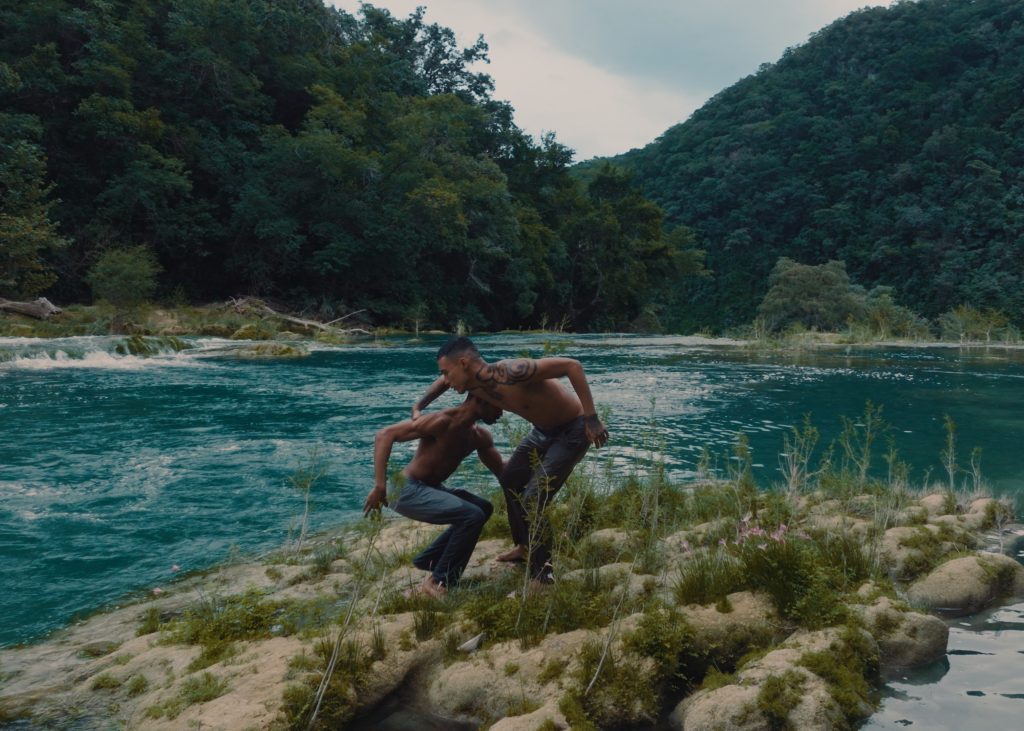A Cosmic Dancer: Rob Woodcox
Art and love know no boundaries, nor do they succumb to repression. We are in the company of Rob Woodcox, who fearlessly expresses his art, believing that love, in an ever-expanding universe, can replace fear and make anything possible. Through his short film ‘Honey to the Moon,’ he brings hope from the depths of darkness, tackling climate crisis, love, and challenging societal norms where his visionary work bridges the gap between reality and imagination, reaching beyond the screens.
Between sun and the moon: Is this cosmic relationship a delicate balance, or an inexorable dance of chaos from which there is no escape?
Rob Woodcox: The relationship between sun and moon in Honey to the Moon is a mixture of balance and chaos; to maintain any relationship requires some amount of compromise, however once you’ve tasted the flesh and love of another you will never be fully free from the chaos that ensues. Every lover I’ve ever had leaves some lasting mark on my mind and spirit. To this day I find myself thinking of past lovers and yet for various reasons I needed to find myself post-relationship to truly be happy and move forward. Life is a dance of chaos but I believe in accepting that reality and making a beautiful journey out of it.
”Honey to the Moon” is a visually stunning and emotionally charged short film. What inspired you to create this particular piece?
Rob Woodcox: As my first approach to directing a short film I wanted to create a piece that is very personal while also maintaining the touch of surrealism that I’ve been known for since I began visual art. I had recently experienced a breakup with a lover while spending the Christmas away from family, putting me in a unique emotional state. When I’m experiencing sadness, anger, fear or unknown- emotions often labeled as bad- I actually see them as invitations to reflect and reevaluate the way I’m moving through life. I started writing about each emotional stage I experience when falling in and out of love and returning to myself afterwards, and these stages became the scenes from the film. When I write about personal experiences I’m quite visual internally, sometimes I can see a whole short film play out in my head before I’ve even scouted a single location. That was the case with this project. This film is an ode to everyone who has fallen in love and had to find their way back to a solo journey.

The film seems to blend elements of fantasy and reality. What message or emotions did you intend to convey through this intriguing mix?
Rob Woodcox: Emotions can feel quite fantastical. Some mornings I wake up and feel as if I’m literally floating with excitement for a new opportunity and other days I feel like I’m dragging rocks. When I’m deeply angered my vision can get a bit blurry and when I’m happy everything can look gold tinted. My emotional or energetic state can completely change my reality. I wanted audiences to truly feel the magic of the various emotions when they watch the two characters find and lose their love. I chose to portray each gain or loss through symbolic storytelling.
One of my favorite moments is when they start to grow into trees, while simultaneously cracks appear on their faces through quick visual cuts. The trees represent the passage of time and the roots we develop with another person, however the cracks show that with time, things can also break and fall apart. The silver lining is that we always have a home in ourself, and developing a healthy inner world can save us from the pain of outside rejection or disappointment. The protagonist can be seen clearing the toxins and returning to himself in one of the final scenes where a white cloud envelops him in the river.
Are there any specific stories or personal experiences while creating your art?
Rob Woodcox: Almost everything I create is directly inspired by personal experiences. Throughout my life I’ve always had a very active imagination and I chose not to let that fade as an adult. As I mentioned, often my emotions directly translate to visuals in my mind; I find it very important to write about these visuals immediately when I receive them. I have a note in my phone with hundreds of concepts I’m eager to create when I have the time, resources, or right characters in front of me!
“Life is a dance of chaos but I believe in accepting that reality and making a beautiful journey out of it.”
-Rob Woodcox
Beyond the film itself, did you have any particular intentions for its impact on your audience, the art community, or broader societal discussions?
Rob Woodcox: I want to continue building on the narrative of self love within society and encourage people to spend time with their emotions and working on themselves as a priority. I believe and have experienced for myself that we can contribute the best to our community when we’re the most elevated version of ourself. That requires work and attention to our emotional, physical and spiritual state. Our society often discourages this self-investment yet I think younger generations are changing that narrative. I also want to celebrate queer love in a world where its still illegal for people to be themselves in over 75 countries, including parts of the United States thanks to recent legislation. The battle for equality is never over, so any art that centers queer narratives is an important contribution to representation in this day and age.
In ‘Honey to the Moon,’ the evocative location plays a pivotal role in eliciting emotions, drawing viewers into its natural allure. Can you elaborate on the significance of nature in your artistic vision and how essential it is in conveying the intended impact of your work?
Rob Woodcox: The scale of the environments we chose to feature symbolically represent how vast our internal universe can be as we navigate life’s various obstacles and triumphs. We are a part of nature. I’m also an environmentalist so any opportunity to feature mother nature as an active character in my art, I take it. I believe that people connecting to nature, whether through visuals or in person, helps bridge the gap of recognizing what we still have left to protect on this planet.






Considering the present state of the art community, the relationships that we are in as human beings, do you identify any particular elements that seem lacking or require change inside of them?
Rob Woodcox: I have seen that late-stage capitalism has overwhelmed every industry on the planet, unfortunately the art community is no exception. It’s not uncommon for us artists to be surrounded by people who want to use our ingenuity for their gain whether it benefits us equally or not. Structures that historically protected artists are falling apart as influencer culture and easy lo-fi technology blurs the lines between true art and commercial regurgitation. The human element is often being left out in place of greed and notoriety. I think it’s paramount for artists to surround themselves with people who have their best interests at heart and who can navigate the industry with integrity and equity. It is my hope that those of us devoted to this industry shift can overwhelm the status-quo to create a more thriving industry for all involved.
The emotions conveyed in your photographs and films are often raw and deeply personal. How do you navigate the fine line between vulnerability and self-expression in your art?
Rob Woodcox: Surrealism helps me convey deep emotion and personal experiences without leaving me completely vulnerable. I suppose I shift the amount of direct vulnerability I share from project to project depending how brave and important I feel that topic to be at any given time. The beauty of art is that it can communicate across all barriers and allow the viewer to create their own connection and take-away. I can show the same photograph to 10 people and get completely unique responses; I find that process extremely valuable in creating micro level impact that can be life changing. I am able to release deep emotions through the catharsis of art, while also helping others discover their own eureka moments. My art is my internal universe on display, and yet it can connect to millions of people in a million unique ways.
“I always trust in hope- even when things don’t go how I imagined, I see those experiences as warm-ups for the big game. Eventually I’ll learn how to overcome those losses and I’ll get a win.”
-Rob Woodcox
What aspirations or dreams do you hold close to your heart?
Rob Woodcox: My biggest dream is to continue sustainably creating and thriving through the expression of my art while reaching people with messages that will uplift and inform them about experiences outside their own.
What hope means to you?
Rob Woodcox: I think hope is saying no to fear. I am constantly faced with decisions to give into doubt, or to believe that something better will come. I do my best to always choose the high road. It’s not always easy, but I constantly remind myself that fear only leads to a dark place and accomplishes nothing. Hope is sending a resume even when you feel under qualified. It’s supporting someone you love even when you’ve faced challenges together. It’s investing in a vision even when you feel out of your depth with that world. I always trust in hope- even when things don’t go how I imagined, I see those experiences as warm-ups for the big game. Eventually I’ll learn how to overcome those losses and I’ll get a win. That’s the strange and beautiful wave of life- we have to go down to go up and vice versa. Through my art and experiences I want to tell people: never lose hope.